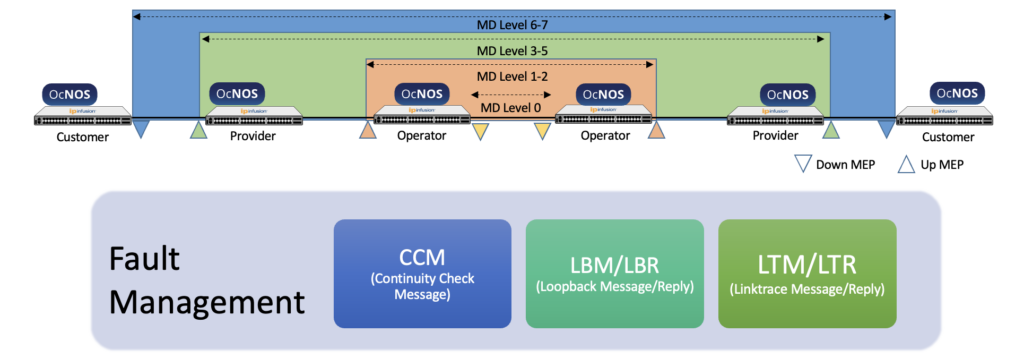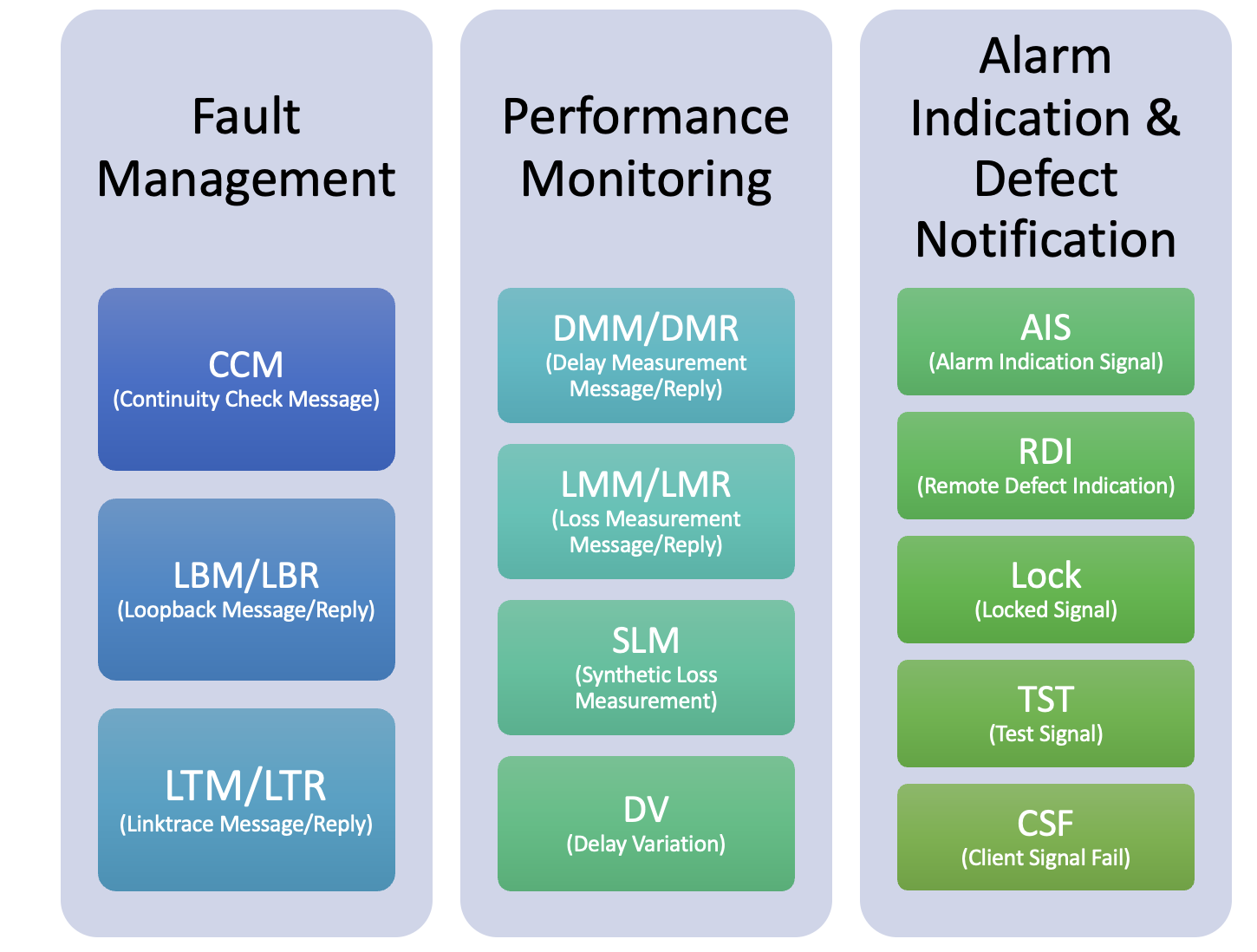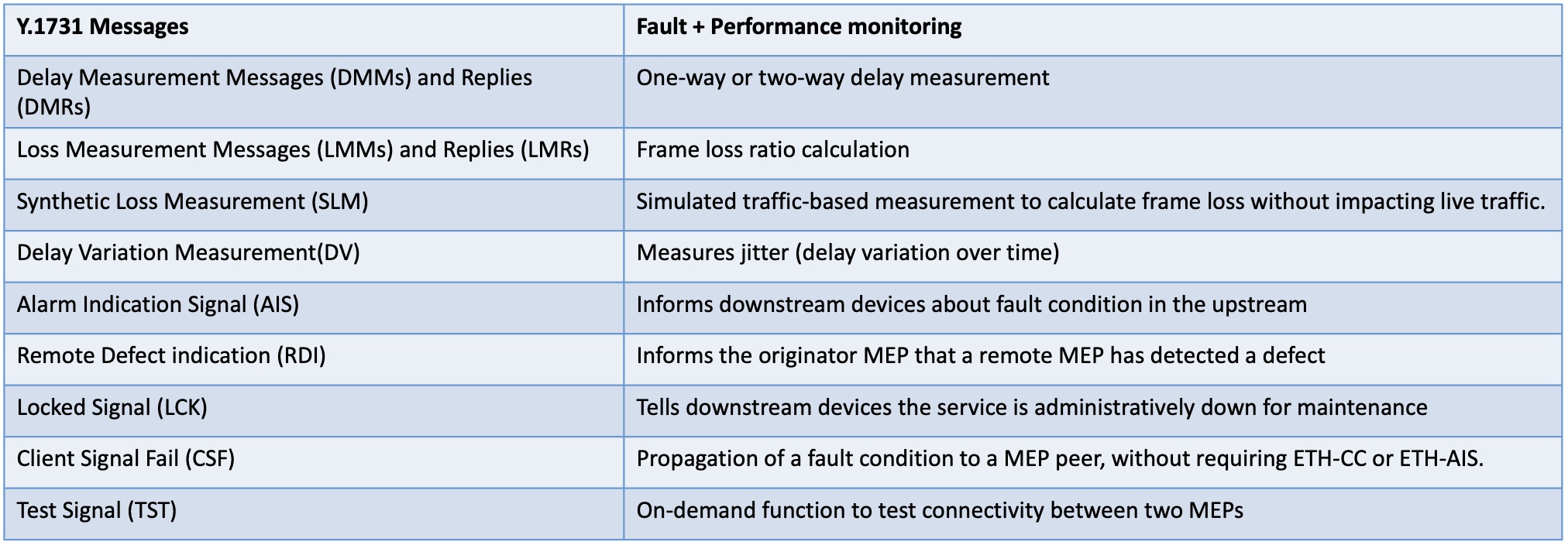Continuing on the performance measurement blog series, in this blog we will explore Y.1731 and Y.1564. Check the previous blog detailing TWAMP in OcNOS here.
Can you imagine driving a car without a dashboard showing any of the details? Would you buy a car that hasn’t been crash tested and quality checks not done before sale? Y.1731 brings in performance details similar to on board diagnostics of the car and Y.1564 ensures testing is done before the service is handed over to the customer. Let’s explore them further in this blog.
As discussed in the previous blog, service providers need performance measurements to deliver high-performance, reliable and scalable networks to meet growing customer demands. ITU-T’s Y.1731 and Y.1564 alongside IEEE 802.1ag-defined Connectivity Fault Management (CFM) plays an indispensable role in achieving these objectives.
Y.1731 extends the services offered by CFM and it uses the CFM’s framework; hence let’s take an overview of CFM first.

Figure 1 CFM Entities
CFM is used for network monitoring and fault detection; it defines Maintenance Domain (MD), Maintenance Association (MA) for the given Maintenance End Point (MEP) or Maintenance Intermediate Point (MIP). Defined messages are exchanged between MEPs and for some messages MIPs would respond to achieve basic OAM functionalities outlined in the following table.

While CFM focuses on fault detection and isolation, ITU-T Y.1731 enhances these capabilities by introducing advanced performance monitoring features.
Y.1731 enables service providers to:
- Measure performance metrics such as delay, jitter, and packet loss
- Verify service-level agreements (SLAs) with customers
- Proactively address performance issues before they impact services
Y.1731 uses and extends CFM framework with the following control messages:

Figure 2 Y.1731 Entities
Y.1731 messages apart from CFM messages are described in below table:

Real-World Applications of Y.1731
- Carrier Ethernet Services: Y.1731 ensures the reliability of ethernet services such as E-Line, E-LAN, and E-Tree, which are widely used by enterprises and service providers.
- Multi-Domain Networks: Y.1731 facilitates collaboration and performance monitoring across large-scale networks spanning multiple providers.
- Data Center Interconnects (DCI): Y.1731 monitors connectivity between geographically dispersed data centers, ensuring seamless operations.
- 5G Backhaul Networks: Y.1731 plays a crucial role in monitoring the performance and reliability of 5G backhaul networks.
While Y.1731 provides a great toolset to measure and ensure performance with customer traffic, there is a need to test and ensure performance before services are offered to customers, or to perform out-of-service tests. ITU-T Y.1564 Service Activation Testing (SAT) helps in addressing this need.
Y.1564 SAT tests involve configuring and generating the required service-streams and then measuring the performance metrics as in Y.1731. However, Y.1564 has not defined any specific messages to achieve these functionalities.
OcNOS makes use of existing CFM and Y.1731 implementations to achieve the Y.1564 SAT defined requirements.

Messages and functionalities are outlined in below table:

Since Y.1564 SAT is having stream generation as its integral part, we can use it as a traffic generator as well, and to create end-to-end customer traffic for bandwidth testing.
Summary:
Performance measurement using Y.1731 and Y.1564 are essential for maintaining high-quality, reliable, and scalable networks in today’s demanding service provider landscape. By offering robust fault detection, advanced performance monitoring, and SLA assurance capabilities, these two empower operators to deliver superior service while minimizing operational costs and complexity. Their integration with CFM ensures a comprehensive approach to Ethernet OAM, making it an indispensable tool for modern networks.
As networks evolve with advancements like 5G, SD-WAN, and cloud computing, the importance of Y.1731 and Y.1564 to ensure seamless connectivity and performance will continue to grow. Service Providers prioritizing these tools are well-positioned to meet customer expectations and maintain a competitive edge in the networking industry.
OcNOS, the leader in disaggregation, offers these features on multiple white boxes, helping Service Providers to embrace open networking and provide greater services to their customers.
For more details refer to OcNOS Feature Matrix and Config Guides.
Contact us to explore OcNOS solutions for Service Providers.

Prasanna Kumara S is a Technical Marketing Engineer for IP Infusion.

